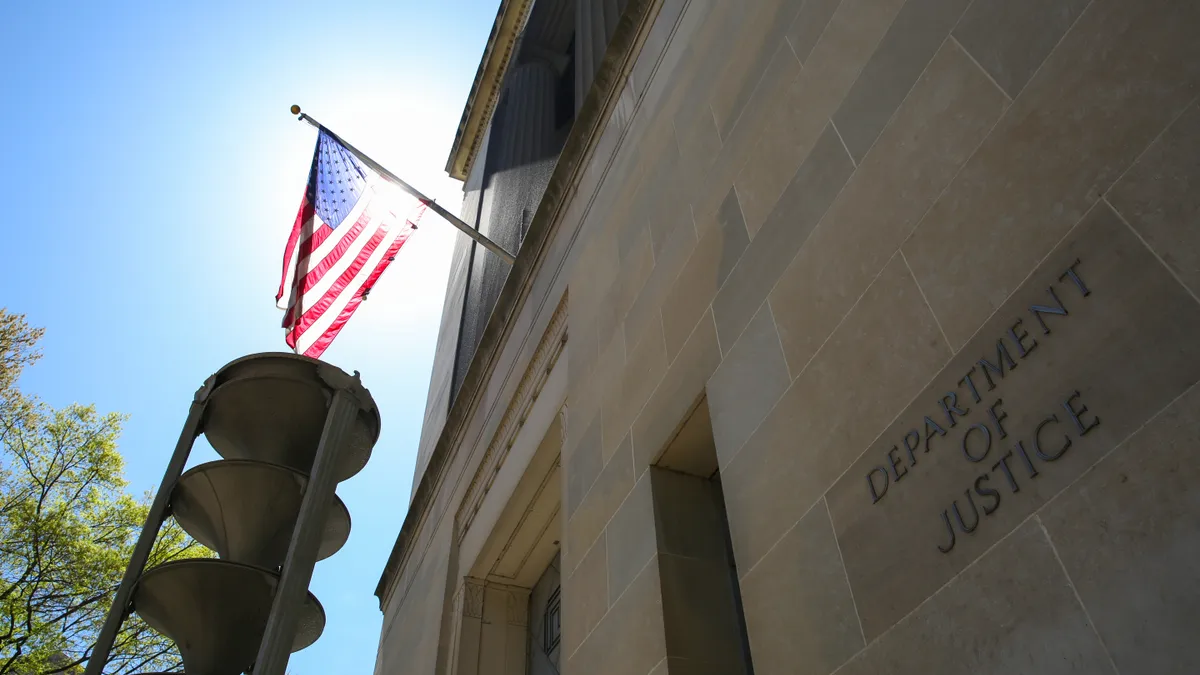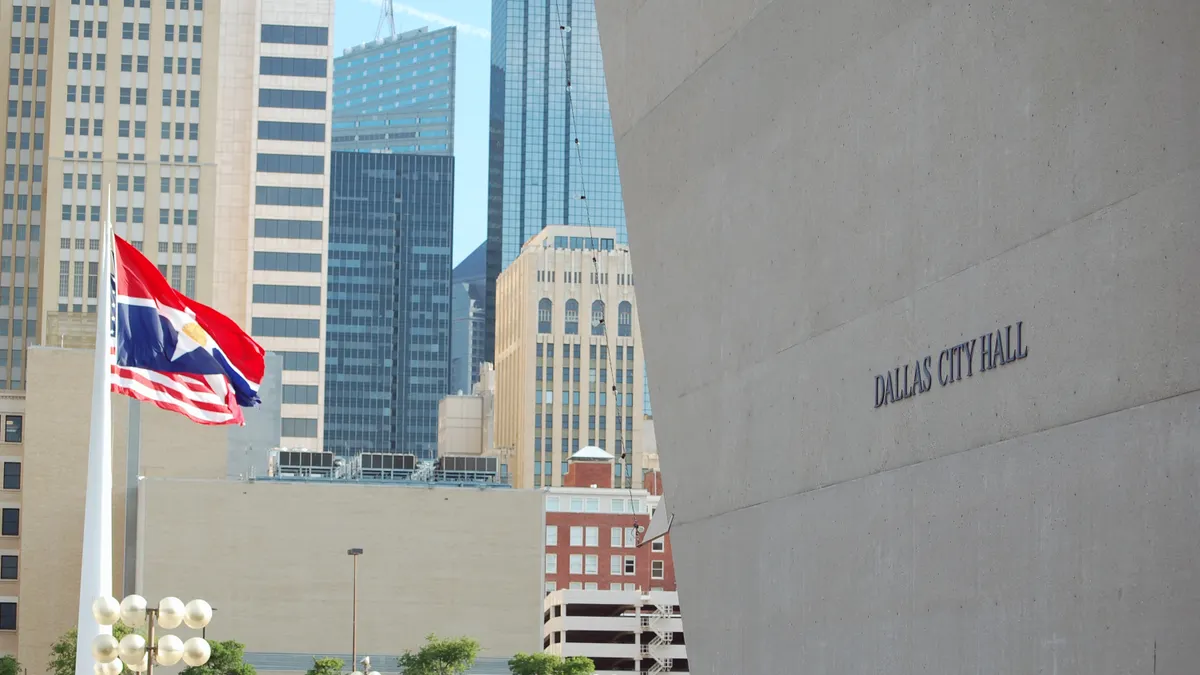Brian Sedar wants 5G access in San Francisco’s Upper Cole Valley neighborhood, where he lives. But then came the new utility pole with a bulky gray box that blemished his once-pristine views of the historic St. Ignatius Church and the waters of the San Francisco Bay.
With the support of 115 neighbors, Sedar, a former engineer with Bechtel, took his case to the San Francisco Public Works Department. His argument: If the city has to put up 5G small cells, do they have to be so intrusive?
“For us neighbors and for people who are walking in our neighborhood, this is the worst effing place you could put something like this,” Sedar told Smart Cities Dive. “If you could move this to a less heavily trafficked place, or a less scenic corner, why couldn’t you?”
After several appeals, Sedar was unsuccessful and the box, installed by Mobilitie, remained. The saga, however, illustrates a major tension as wireless companies race to get 5G out to consumers: sometimes progress isn’t pretty.
5G networks, which will offer download speeds of at least 100 megabytes per second, rely on short, high-frequency signals to share data. That means instead of existing cell towers, companies will have to rely on hundreds of short-range antennas housed in small cells to make 5G work in dense urban areas.
An analysis from wireless communications trade association CTIA predicts that the country will have more than 800,000 small cells by 2026, up from about 13,000 in 2017. 5G will support connected vehicles and infrastructure, internet of things (IoT) equipment, the smart grid and even bring artificial intelligence (AI) to work sites. Seeing the economic potential, all levels of government have pushed the U.S. to rapidly deploy infrastructure to keep pace with China and South Korea.
That comes at a cost, especially in cities that rely on their historic identities. Take New Orleans, which recently passed new rules to set fees and permit requirements for telecoms in order to expedite installation and help close the city’s digital divide.
In the French Quarter neighborhood, that meant new poles that take up valuable sidewalk space and push street signs higher up, blocking views from upper windows. Because the infrastructure is going on the public right-of-way, residents say they have less opportunity to object and ask for design changes, even though the cylinders look out of place amid the Creole townhouses.
"Of course we want fast internet. The French Quarter is 300 years old, but it’s not frozen in time," Erin Holmes, executive director of the Vieux Carré Property Owners, Residents and Associates, the area’s neighborhood association, told Smart Cities Dive. “Special consideration needs to be made for historic areas, especially if you’re blocking the public egress."
"Of course we want fast internet. The French Quarter is 300 years old, but it’s not frozen in time."

Erin Holmes
Executive Director, Vieux Carré Property Owners, Residents and Associates
Trying to control the 5G race, some cities and states have passed permitting requirements, fees and aesthetic requirements in an attempt to make the equipment less intrusive. Concerns about the health implications of radiation have also led to some local moratoriums on 5G.
That’s collided headlong with the government’s desire to make the U.S. a global leader on the new technology. The Federal Communications Commission (FCC) last September passed a controversial rule that sought to limit local fees and set approval deadlines. That included guidance around aesthetics, saying such requirements had to be less burdensome than what would be applied to similar infrastructure deployments and must be published in advance.
"'Secret' rules that require applicants to guess at what types of deployments will pass aesthetic muster substantially increase providers’ costs without providing any public benefit or addressing any public harm,” the FCC wrote.
Local governments have pushed back, filing several lawsuits and vowing to stop what they’ve decreed as an “overreach,” especially around fees.
A recent court ruling in California — with its roots in the spread of cellular service more than a decade ago — may give cities a leg up. Verizon had sued San Francisco over a 2011 ordinance that allowed the city to reject mobile infrastructure if it detracted from the city’s beauty. It was designed to stop cell towers from blocking scenic views, but Verizon feared it would be used to curtail 5G cells.
The state Supreme Court sided with the city, saying it "has inherent local police power to determine appropriate uses of land.” That, the court added, "includes the authority to establish aesthetic conditions for land use."
In a statement, City Attorney Dennis Herrera said the city was "simply requiring companies to take reasonable steps to minimize the obtrusiveness of their installations." Between 2014 and 2018, the city granted 1,067 permits and denied just five; companies are given the chance to adjust the location and color of their equipment to meet community standards.
AT&T, for example, partnered with the nonprofit San Francisco Beautiful to have local artists that decorate the boxes that house wireless equipment in the Richmond, Excelsior and Castro districts.
“We live and work in the communities we service across the country, and coordinate closely with local officials and community members on our small cell plans,” an AT&T spokesman told Smart Cities Dive.
Aesthetic complaints aren’t new for cities; as more sensors, cameras, monitors and wireless antennas support smart cities applications, they can often look out of place.
When Chicago kicked off its "Array of Things" program, which installed hundreds of sensors around the city to monitor environmental and road data, design was put on equal footing with tech.
The city recruited professors from the School of the Art Institute of Chicago to craft a sleek casing for the sensors. Robb Drinkwater, an Array of Things consultant and SAIC professor, recalled in a 2017 Gigabit Summit conference that he had one direction from the city: "Please don’t make it ugly."
Small sensors are one thing, but wireless infrastructure that must house bulky antennae can be hard to blend into the surroundings, especially as 5G becomes more commonplace. And for residents like Sedar, that could mean more headaches. He’s concerned that San Francisco, even with legal authority, could put technology over beauty.
“I don’t object to 5G, the city has the right to do what it can do,” Sedar said. “The rights they got were good, but what are you going to do with it? It’s like the city wanted to grab the ball, and now they’ve dropped it.”

















